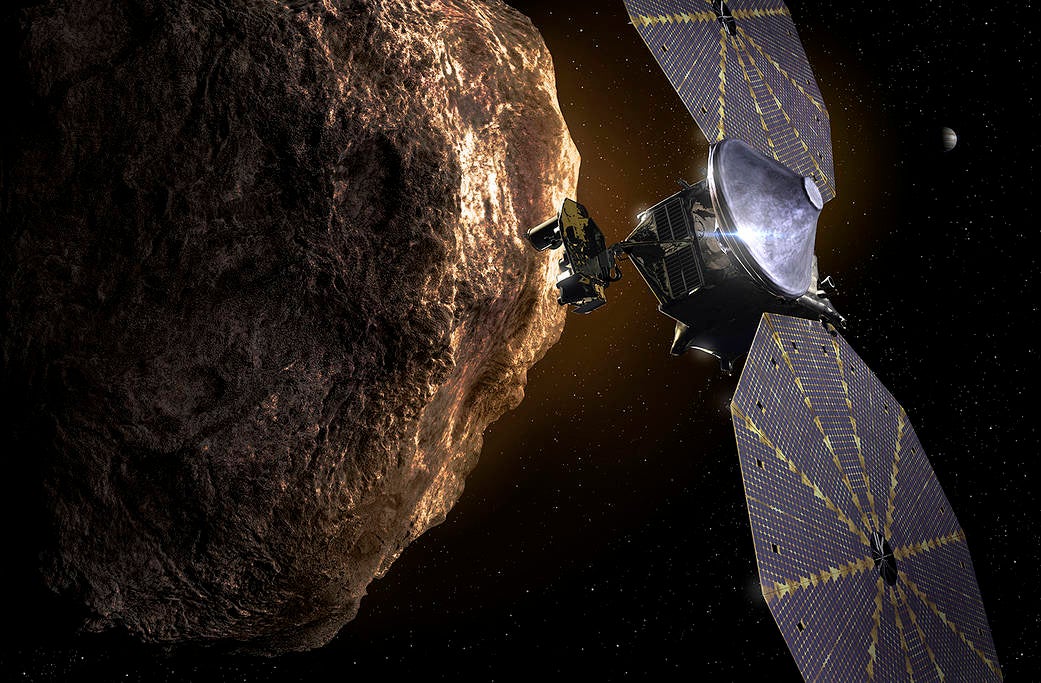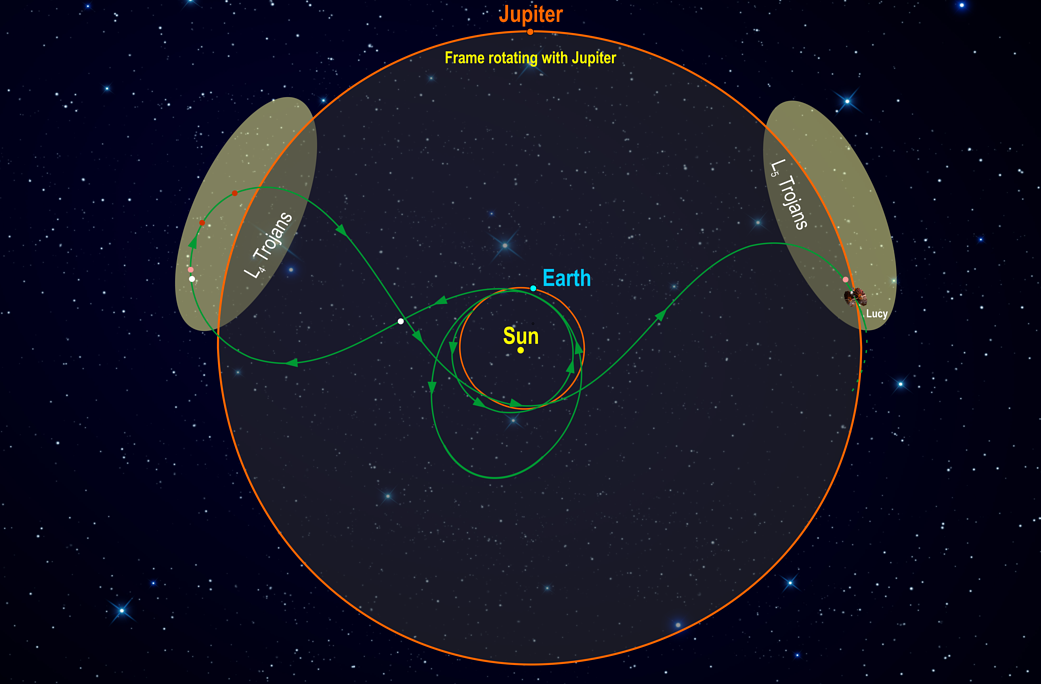Nasa readies spacecraft to Jupiter’s Trojan asteroids to unveil secrets of Solar System’s formation
No other space mission has ever been launched to as many different destinations in independent orbits around sun

Your support helps us to tell the story
From reproductive rights to climate change to Big Tech, The Independent is on the ground when the story is developing. Whether it's investigating the financials of Elon Musk's pro-Trump PAC or producing our latest documentary, 'The A Word', which shines a light on the American women fighting for reproductive rights, we know how important it is to parse out the facts from the messaging.
At such a critical moment in US history, we need reporters on the ground. Your donation allows us to keep sending journalists to speak to both sides of the story.
The Independent is trusted by Americans across the entire political spectrum. And unlike many other quality news outlets, we choose not to lock Americans out of our reporting and analysis with paywalls. We believe quality journalism should be available to everyone, paid for by those who can afford it.
Your support makes all the difference.Nasa is set to send a spacecraft to Jupiter’s Trojan asteroids in a mission that could shed more light on the origins of the Solar System.
The space agency said in a statement on Tuesday that it has tested the functions of Lucy — Nasa’s first spacecraft to these asteroids — and filled it with fuel. The spacecraft is scheduled to be launched on 16 October.
These space rocks, named after characters from Greek mythology, circle the Sun along with Jupiter in two swarms, with one group ahead of the giant planet in its path and the other trailing it.
Studies have suggested that these swarms of asteroids are remnants of the primordial material that formed the outer planets. With the Lucy mission, Nasa scientists hope to hone their theories about the formation of the solar system 4.5 billion years ago and understand how they ended up in their current configuration.
Lucy will explore a record-breaking number of asteroids, flying by one asteroid in the solar system’s main belt and seven Trojan asteroids.
The spacecraft will circle back to Earth three times for gravity assists, making it the first-ever to return to the vicinity of Earth from the outer solar system.
No other space mission in history has been launched to as many different destinations in independent orbits around the Sun, Nasa noted.

“With Lucy, we’re going to eight never-before-seen asteroids in 12 years with a single spacecraft. This is a fantastic opportunity for discovery as we probe into our solar system’s distant past,” Tom Statler, Lucy’s project scientist at Nasa’s headquarters in Washington, said.
Over the last eight weeks, Nasa said its engineers have been preparing the spacecraft for flight at the agency’s Kennedy Space Centre in Florida, testing its mechanical, electrical, and thermal systems as well as practicing executing the launch sequence from the mission operations centres.
Earlier this month, Nasa finished filling Lucy’s fuel tanks with approximately 725kg of liquid hydrazine and liquid oxygen.
The fuel, which makes up 40 per cent of the spacecraft’s mass, will be used to propel Lucy to its asteroid destinations on schedule, and its expansive solar arrays — each the width of a school bus — would recharge the batteries for powering instruments aboard the spacecraft.
In August, engineers also installed high-gain antenna on the spacecraft, which would allow it to communicate with Earth.
The spacecraft will be moved to the Cape Canaveral Space Force Station, where it will be integrated with the United Launch Alliance Atlas V 401 rocket, next month. The Atlas V will lift off from Space Launch Complex 41, carrying Lucy outside Earth’s atmosphere to begin its long journey to the Trojan asteroids.
Lucy’s first launch attempt is planned for 5.34am EDT on 16 October, but if weather or any other issues prohibit a launch that day, Nasa will have additional opportunities to launch the following day.
Join our commenting forum
Join thought-provoking conversations, follow other Independent readers and see their replies
Comments